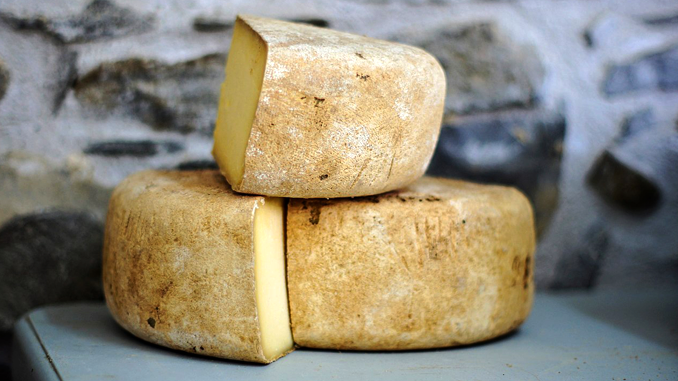
Throughout the world, different cultures have ceremonies and rituals commemorating the lives of the recently departed. Wakes are common among many Christian faiths, and sitting shiva is a Jewish mourning practice. During these and similar events, people gather to pay their respects and share the grief of those who remain.
It’s fairly common for the family to act as hosts and provide some form of food and drink to the mourners. In the town of Grimentz, Switzerland they knew what food it was going to be.
Grimentz, high in the Alps, is small community that services nearby ski resorts. Prior to the influx of tourists, though, it had a different specialty: dairy. Grimentz was a poor town that specialized in herding cattle. Individual citizens had a variety of skills and talents but they shared one vocation: cheesemakers. Milk was readily available but would not survive long travel to market; cheese, on the other hand, could retain its usefulness indefinitely. If passes were closed, the cheese could simply be aged until a trading road was reopened. The money raised could then be used to purchase other goods as needed.
This part of the city’s history was well known. What wasn’t known was how proud the citizens had been, prior to the growth of skiing as a tourist draw. This aspect of their lives was discovered in 1944, when a man was attempting to clean the basement of his mother’s house after she’d passed away. He discovered two thick, hard wheels of cheese, marked from 1870… the year of his mother’s birth.
Curious, he began to inquire to some other locals. The older residents admitted that they, too, had cheese wheels dated from the time of their birth. This inspired further digging, and a forgotten custom was brought to light. In centuries past, families would craft a cheese wheel for the newly born. With an often-impoverished citizenry, cheese was the only thing that everyone could be certain to be able to possess. Those cheeses were set aside, then brought out upon the individual’s death, so as to feed the mourners at their funeral.
The person who performed the gastronomic anthropology was named Zufferey, and he didn’t serve the cheese wheels he’d discovered. The town had moved on, and he’d been able to provide a more conventional repast for visiting mourners. Instead, he stored them in his basement, which was already configured to provide conditions for proper aging.
In the years that followed, other local “death cheeses” were discovered, and they were brought to Zufferey’s house by people who didn’t know what else to do with them. Zufferey’s son, Jean-Jacques Zufferey, now owns the house and the wheel collection has grown to number in the dozens. He’d like to donate them to a museum, but has not as yet found one which is equipped to handle the temperature and humidity requirements of the relics. Instead, for now, the unassuming Zufferey home in the midst of a town of mechanics, handymen, and domestic help contains some of the oldest theoretically-edible cheese in the world.
Question of the night: What is your favorite cheese-using recipe?
